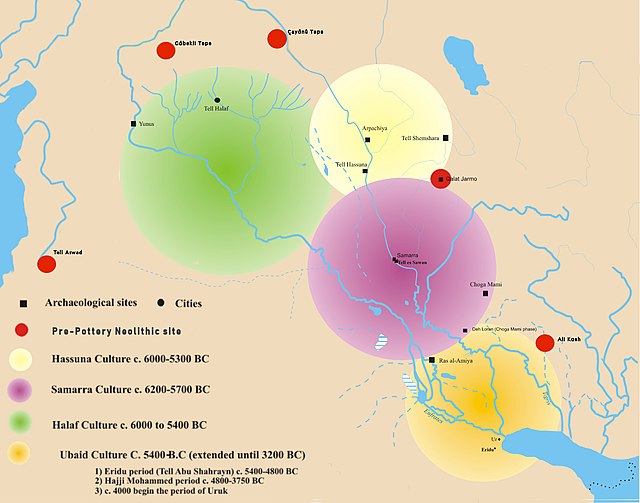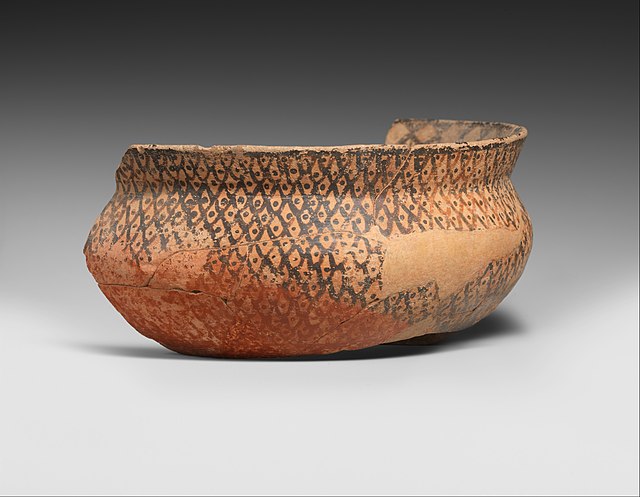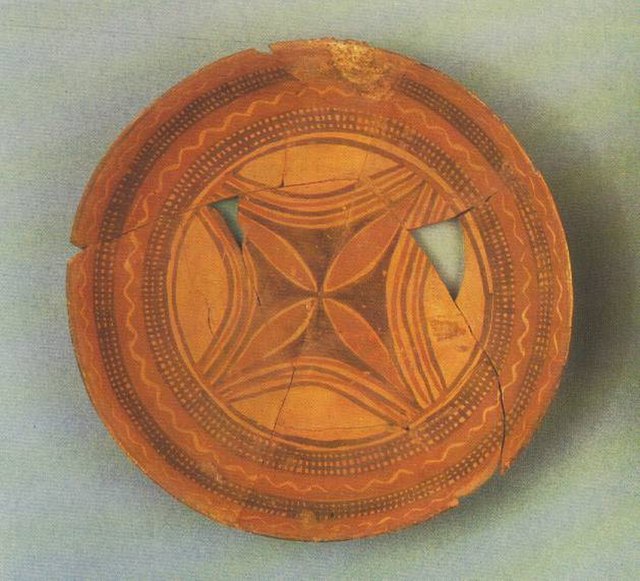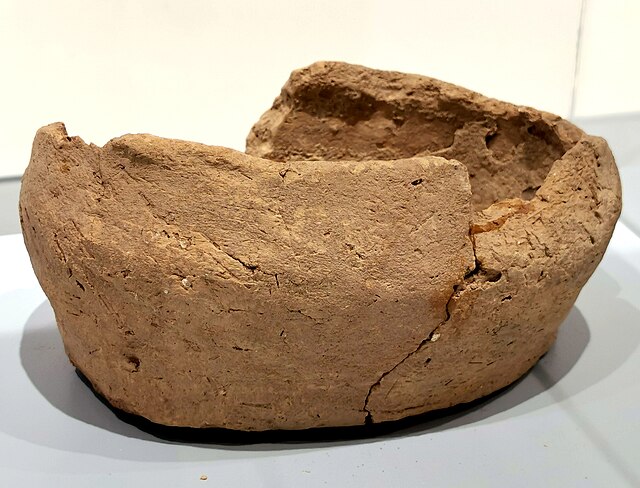The Halaf culture is a prehistoric period which lasted between about 6100 BC and 5100 BC. The period is a continuous development out of the earlier Pottery Neolithic and is located primarily in the fertile valley of the Khabur River, of south-eastern Turkey, Syria, and northern Iraq, although Halaf-influenced material is found throughout Greater Mesopotamia.
Halaf culture (in green), next to Samarra, Hassuna and Ubaid cultures.
Fragment of a bowl; 5600–5000 BC; ceramic; 8.2 cm; Metropolitan Museum of Art (New York City)
Halafian ware
Fertility figurine (maybe a goddess?); 5000–4000 BC; terracotta with traces of pigment; 8.1 × 5 × 5.4 cm; by Halaf culture; Walters Art Museum (Baltimore, US)
In the archaeology of Southwest Asia, the Late Neolithic, also known as the Ceramic Neolithic or Pottery Neolithic, is the final part of the Neolithic period, following on from the Pre-Pottery Neolithic and preceding the Chalcolithic. It is sometimes further divided into Pottery Neolithic A (PNA) and Pottery Neolithic B (PNB) phases.
After the initial Pre-Pottery Neolithic phase from northwestern Mesopotamia to Jarmo (red dots, circa 7500 BCE), the Pottery Neolithic culture of Mesopotamia in the 7th–5th millennium BCE was centered around the Hassuna culture in the north, the Halaf culture in the northwest, the Samarra culture in central Mesopotamia and the Ubaid culture in the southeast, which later expanded to encompass the whole region.
Yarmukian pottery vessel, Sha'ar HaGolan.
Pottery bowl from Jarmo, Mesopotamia, 7100-5800 BCE.
Jar decorated with diverse geometric patterns; 4900-4300 BC; ceramic; by Halaf culture; Erbil Civilization Museum (Erbil, Iraq)







